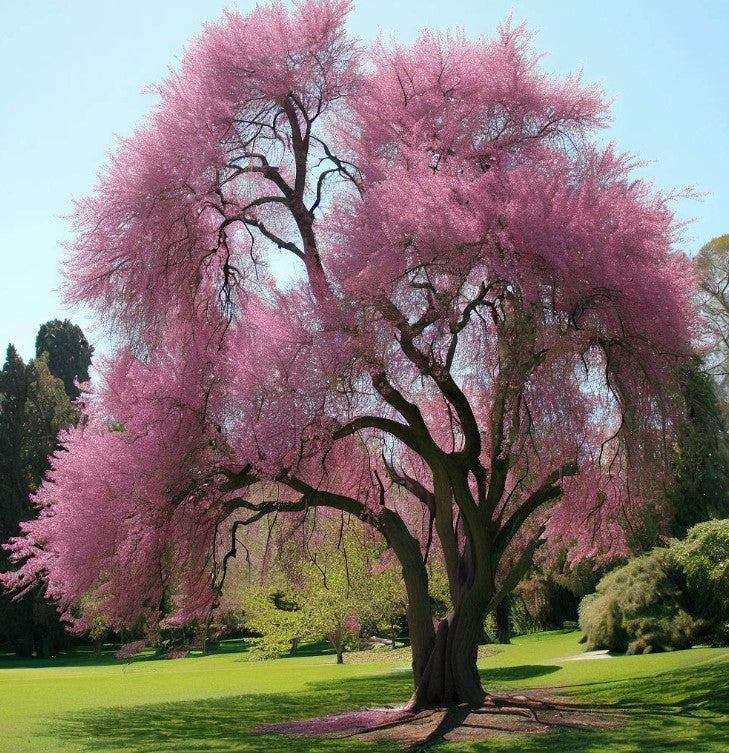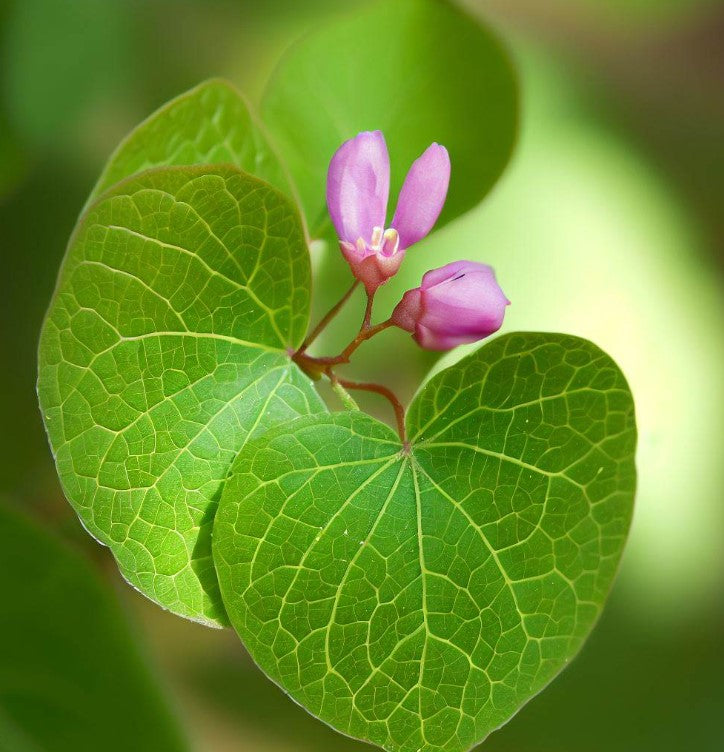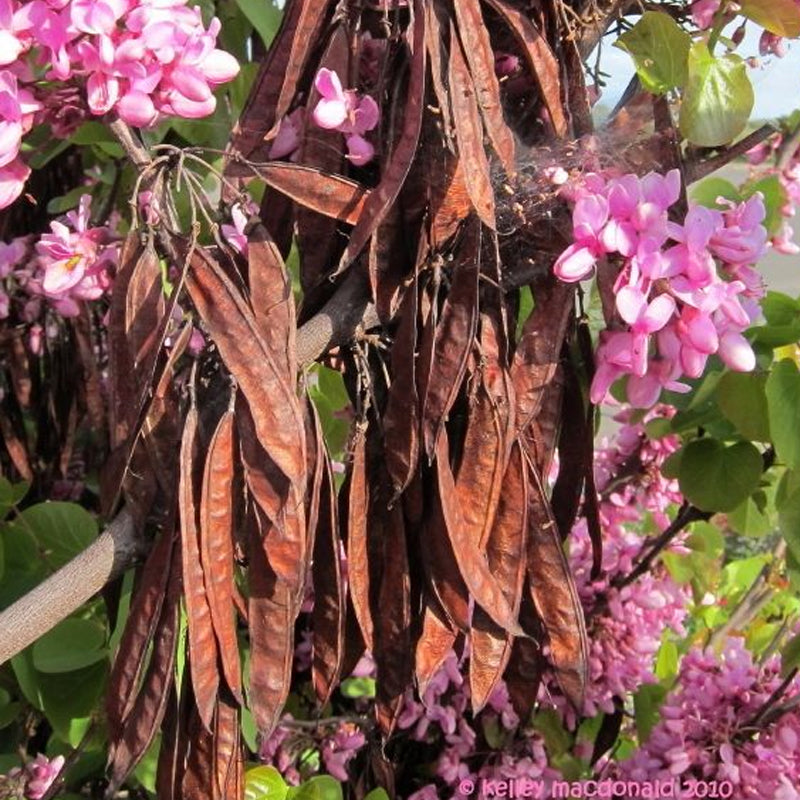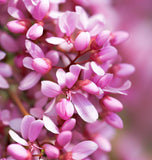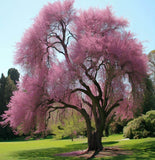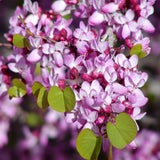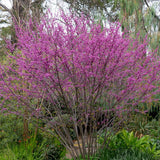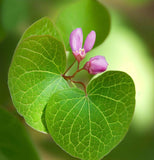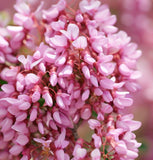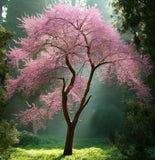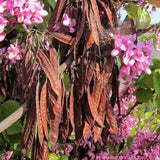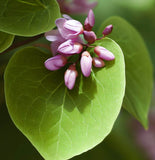Cercis occidentalis (California Redbud)
Cercis occidentalis (California Redbud) is a small deciduous tree native to the western regions of North America, particularly California and parts of the southwestern United States. The California Redbud is a small tree that typically reaches a height of 10 to 20 feet (3 to 6 meters) with a similar spread. It has a rounded canopy and a short, often twisted trunk. The bark is smooth and gray when young, becoming darker and developing fissures as the tree ages. The leaves are alternate, heart-shaped, and vary in color from bluish-green to bright green. They turn yellow in the fall before dropping.
Flowers and Fruits: One of the main attractions of the California Redbud is its stunning display of flowers. In early spring, before the leaves emerge, the tree is adorned with clusters of small, pea-like flowers that range in color from pink to magenta. The flowers appear directly on the branches and trunk, creating a striking visual effect. After flowering, the tree produces flattened, brown pods that contain small, rounded seeds.
Habitat and Range: The California Redbud is adapted to a variety of habitats, including woodlands, canyons, slopes, and chaparral. It prefers well-drained soils and is often found in dry or rocky areas. The tree is native to California and extends into parts of Arizona, Nevada, and Oregon.
Uses: The California Redbud is highly valued for its ornamental qualities. It is frequently planted in gardens, parks, and landscapes for its beautiful spring flowers and attractive foliage. The tree's compact size makes it suitable for smaller yards. Additionally, the California Redbud is an important plant in ecological restoration projects as it helps stabilize soil and provides habitat for wildlife.
Ecological Importance: The flowers of the California Redbud are an important source of nectar for bees, butterflies, and other pollinators. The tree also provides food and shelter for various wildlife species. The seeds are consumed by birds and small mammals, aiding in seed dispersal. Additionally, the tree's branching structure provides nesting sites for birds.
Cultural Significance: The California Redbud holds cultural significance among Native American tribes in its native range. It is sometimes used in traditional ceremonies and has been used for food, medicine, and basketry material.
Botanical Name : Cercis Occidentalis
Common Name : California Redbud
Height : 10-20 ft
Spread : 10-15ft
Germination Info : Scarify seed and then cold moist stratify for 30-60 days
Hardiness zone : 7-9
Average seed per ounce : Approx. 750


